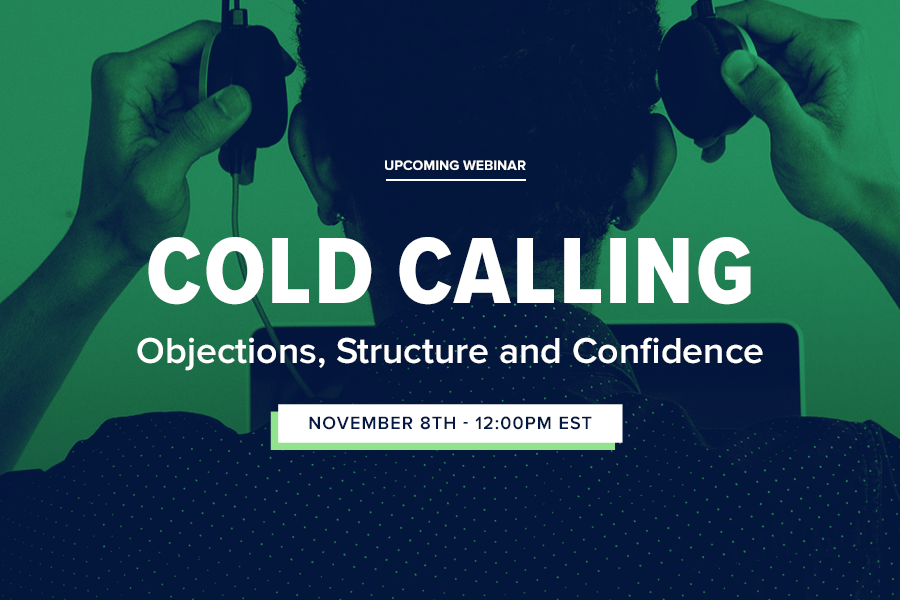There is no shortage of free sales training resources out there. Today there are more videos on YouTube than you could watch in your lifetime and more books on Amazon or Audible than you could ever get through even if you read one a day. Unfortunately, there is no magic resource that will automatically help you become a master sales rep, but we can work on getting a little bit better each day.
Below are a few of my favorite sales tips and resources I’ve leveraged over the years to help me drive better results and stay ahead.
1. Know your equation
To a certain degree sales is a numbers game. We have to understand our metrics (quantity) before we can focus on refining our approach (quality). As a VP of Sales for my first startup when I was 25 years old we had some aggressive growth numbers that I had to figure out how to hit consistently. Since I was so young and didn’t have a ton of experience the only thing I knew I could control was my effort so I decided to become very metric driven on my activities. I knew my equation cold. I had to make 400 dials a week to get 8 meetings a month that lead to 4 proposals and 2 closed deals at an average deal size of $3500/month.
By understanding this equation I could back into my numbers and know what I had to do on a daily basis to achieve success. I also knew how to scale and what we should expect from adding additional sales reps. Lastly, this gave me a baseline to start understanding my conversion ratios between the stages and try to find ways to improve at each stage.
Additional resource: Your Success Equation
2. Set Goals. Lot’s of Goals.
Without goals in your career, you’re just along for the ride and someone else is dictating the path. The best sales professionals in the world set daily, weekly, annual and life goals and hold themselves accountable.
Your goals need to be S.M.A.R.T. (Specific, Measurable, Achievable, Realistic, and Timely). You shouldn’t set goals like “I want to get better.” There’s no way to measure that. A better goal would be “I want to set 3 meeting this week with VPs or above” or “I’m going to close this deal this week.”
Everyone likes crossing things off a list, no matter how basic those things are. Write down your goals on a daily basis to keep yourself focused and motivated. No matter how bad your day went, if you achieve those goals you had a good day.
Additional Resource: Smart Goal Setting (Note: I recommend sharing with your team before you set goals in a 1:1 meeting).
3. A/B Split Test Everything
Knowing your equation and setting goals is great but if you’re just going through the motions with those numbers and goals and not learning anything along the way, everything is a waste.
Unfortunately those 400 dials a week I was doing were purely focused on quantity, not quality and so it was hard for me to figure out what was working other than the pure effort alone. I should have learned more from those activities so I could have refined my process and improved those conversion ratios.
The number one piece of advice I would give my 22-year-old self would be to A/B split test everything you do. Take two different approaches to a similar problem and see which one works better. For instance, if you’re calling into VPs of Sales in the SaaS industry, come up with two different messages to them and call 20 using one message and 20 using another message to see which one yields a higher response rate. You can do this with everything – gatekeepers, specific objections, etc.
By split testing everything, you can start to refine your process and make measurable improvements to figure out what works for you compared to everyone else.
Additional Resource: How To Figure Out What Works
4. Create Personas and Build Out a Contact Strategy
The messaging you use to sell your solution or get a meeting with a VP of Sales in the Oil and Gas industry is much different than the Head of HR in the Healthcare industry. It doesn’t make sense to try and shift gears from one persona to the next.
Different personas, industries, and even regions will require different contact strategies. Come up with different contact strategies to test based on your ideal customer profile. Goals of your contact strategy could be to determine how many touches you need, what the cadence and timing looks like, or if alternative channels like video, text or LinkedIn InMail work better than email or phone.
Have cold-calling power hours where you focus on calling a specific persona with a specific message. I recommend you and some coworkers (no more than four) grab a conference room, speakerphone and take turns dialing. You’ll learn quickly and it’s a lot more fun than sitting in your cube with your head down trying not to be heard when you get hung up on.
Additional resources: Your Cold Call Contact Strategy
5. Leave Better Voicemail
It amazes me how many reps don’t leave voicemail. You’ve taken the time to reach your prospect, why not take ten seconds to leave a voicemail? Even if they don’t call you back, calling a bunch of times and not saying who you are is creepy. Voicemail also increases the chances of getting a response by email, ensures your prospects have your direct contact information (it may even go to their email) and increases the likelihood of receiving a callback.
Leave your contact information at the end of the voicemail so your prospect will listen to your attention grabber first. If you screw up halfway through, you can always hang up before saying who it is.
Additional resource: How To Leave Effective Voicemails
6. Start with Powerful Introductions
We only have a matter of seconds to capture a prospect’s attention. Introductions like “Hi, this is John Barrows with JBarrows Sales Training, how are you doing today?” Immediately setting the tone that it’s a sales call will turn prospects off. You don’t care how that prospect is doing and it wastes their time. An intro like “Thanks for taking my call” is just as polite, but it doesn’t come off as artificial as asking someone you don’t know how they’re doing.
Another common weak introduction is “Is this a good time?” It’s never a good time for a cold call and your prospects don’t know how long this is going to take.
Instead, ask if it’s a bad time or quantify your ask with, do you have a couple of minutes? It shows that you’re only going to take a little bit of their time, and still ensures you aren’t catching them at a time they can’t talk.
Additional Resource: Starting with Powerful Introductions. Listening in on some calls using a tool like Gong.io, and make working on powerful introductions a goal in an upcoming call blitz/power hour.
Additional Cold Calling Training
If you want additional cold calling training for free, sign up for our webinar hosted by Morgan J Ingram. He’ll be going over the essentials like the structure of a cold call, handling objections, and more. This webinar will give you and your reps the confidence needed to keep dialing!







